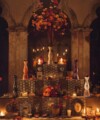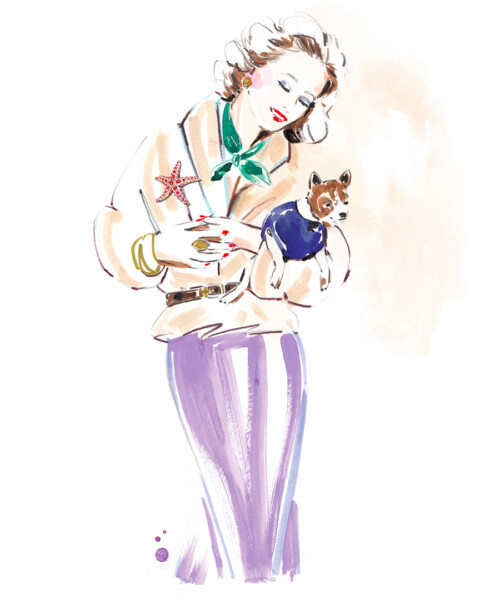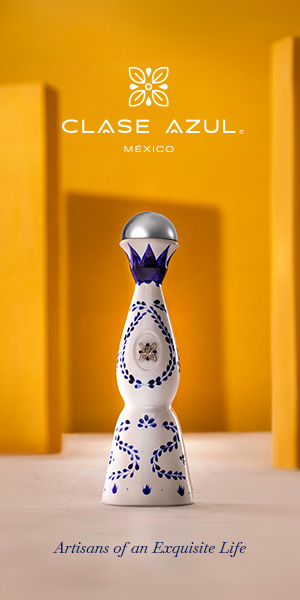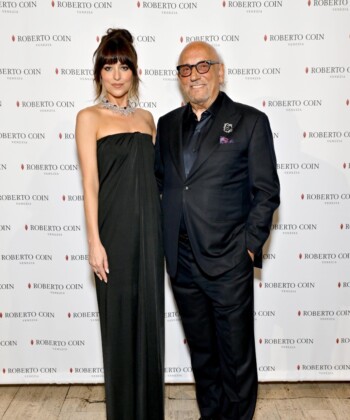I needed to know more about the starfish and the world that had produced them. They obviously had a quality that had survived the fluctuations of taste and value over time while other jewelry slipped into oblivion. When I spoke by phone with British jewelry expert Vivienne Becker, who listed the Boivin ruby and amethyst starfish as one of the hundred most valuable pieces in the world in her book, The Impossible Collection of Jewelry (Assouline), she explained to me what she considered the starfish’s enduring appeal. “It was a superb piece of design timed so well. It was so avant-garde at the time, the size, the mix of colors. The material was used brilliantly to reflect nature in a very unsentimental way. There was the audacity of making something so big and colorful. It was an expression of femininity at the time, strong and bold.” She added that the value, and perhaps the design, were influenced by “who owned and who wore them,” in much the same way that celebrities boost the value of styles and design today. “Really good jewelry designers are so rare and so exceptional and a good piece of design made in precious materials is even more rare.” She had first seen an actual starfish in 2012 in New York when Lee Siegelson had Millicent Rogers’s in his salon.

From Diving for Starfish by Cherie Burns. Copyright © 2018 by the author and reprinted by permission of St. Martin’s Press.
Because I had not handled the starfish at Verdura I had not yet experienced the marvel of its articulated rays, a mechanism so finely tuned that the rays did not dangle loosely when pinned on but [rather] gently conformed to the body of the wearer. The articulation made them versatile. There were many curves and contours where they could be pinned and molded to a woman’s figure.
The starfish brooches are outsized, but their gems and price tags are not, which can be confusing to novice collectors who consider stones as the best measure of value. Counting carats misses the point. Vintage jewelry as exceptional as the starfish is about equal parts craft and style and history and romance, not gemstone size. Even though the latest sale of a Boivin starfish fell not far beneath a million dollars, many diamonds will exceed that any day. A Boivin ruby and amethyst starfish appeals to a different side of a collector’s fancy than does a big rock. Rather than mineral value and financial worth, it is a piece of art, and art typically has a story attached that helps a sophisticated collector appreciate it.
The starfish’s value was rooted in its history. Jewelry design, like both fine and decorative arts once you get beyond the first scratches on the walls by cave dwellers, always owes something to the design ethos that came before. The period of jewelry-making in the 1930s that had spawned the starfish was a golden—and bygone—era. Its best attributes were represented in the starfish.
That’s one reason they are counted among the most spectacular pieces of the twentieth century.
I stopped for a bemused moment to consider my own qualifications as a chronicler of such exotic and sumptuous pieces. Beyond being a reporter and a writer, I had none. Except, I noted whimsically, the brooches had a lot of rubies, and ruby was my birthstone. So why not, I reasoned, start my research there?
I was given a ruby about the size of a grain of cracked wheat, set in a gold ring, by my grandmother when I was seven. My parents replaced it later with another, a slightly larger oval stone set in a little gold mesh screen. It was purchased at the town jewelry store on Main Street around the corner from our house in Richmond, Indiana.
That store, like so many small-town institutions that dotted main streets before merchants moved to malls, sold mostly engagement rings, charms for charm bracelets, lavalieres and high school rings. Its big storefront window and interior glass jewelry cases made it a favorite place for me and my junior high girlfriends to burn time when we walked home after school. The clerks were endlessly patient as we asked to see this charm and that, to try on rings we had no chance of buying and to look at post earrings, although we didn’t have pierced ears. That was about the extent of one’s jewelry needs in Richmond, until you graduated from high school or became engaged, and I did neither there. My grandmother, an antiques dealer, gave me another ring with two small rubies cupped in open gold roses. It snagged on sweaters and towels. I left it on the edge of the bathtub in the Jefferson Hotel in Washington, D.C., many years later and never saw it again.

From Diving for Starfish by Cherie Burns. Copyright © 2018 by the author and reprinted by permission of St. Martin’s Press.
I never bothered to think about the quality of stones or where they came from until I encountered the Boivin starfish. But now I was making the connection between that storefront in Indiana and the glorious pieces that had captivated me. Design is the crowning glory of the brooches, but their attraction for me had started with the stones.
The raw elements of these pieces, even before the storied French creators and the glamorous owners, have their own illustrious history. Rubies were first mentioned in recorded history in literature about the Northern Silk Road of China in 200 B.C. Always valued highly in Asian countries, they were used to ornament armor, scabbards, and harnesses of Indian and Chinese noblemen. Cleopatra draped herself in both precious and semiprecious jewels, rubies among them, when she reclined under her gold-spangled canopy. They came into more popular usage and fashion in Europe at the turn of the twentieth century. Some thirty years later, Boivin’s starfish were spawned on a drawing desk in Paris.
I did some homework.
The most desirable ruby stones are bloodred, or “pigeon’s blood.” Legend has it that they were named by the Chinese who prized them for matching the shade of a drop of pigeon’s blood on a silver tray. For 800 years the best have been mined in Burma (Upper Myanmar), in the Mogok Valley, a region four hundred miles north of Rangoon. They have been mined in Thailand, Cambodia, India, Afghanistan, and even more recently in Kenya and Montana in the United States, but the best have most often come from Burma, as did the stones in Boivin’s ruby starfish.
The 71 rubies that went into each of Boivin’s ruby and amethyst starfish were cabochons, stones shaped and polished to a rounded dome with a fat bottom, rather than faceted. They were prized for their intense color and often used in crowns of kings and noblemen. But normally, Boivin made a point of not buying the best gemstones because the value of its jewelry, in the minds of the Boivins and their designers, was derived from workmanship and design rather than the worth of gems. The balance between the value of the stones and the less tangible aesthetic appeal was invariably tipped toward the latter. It’s a bit like the execution of a good French pastry that owes more to its baker than the raw, albeit high-quality, ingredients used to make it.
Amethysts, on the other hand, are semiprecious stones, a quartz crystal in fact. It was bold of Boivin to pair them, purely for their purplish color, with precious red rubies. Before the 19th century amethysts had been nearly as expensive as precious stones and appeared in the crowns and jewelry of royals, but a large deposit discovered in Brazil in 1902 lowered their price and flooded the gem market. They have been a favorite of mass-market jewelers ever since. The name amethyst, which means “not drunk” in ancient Greek, has caused some wearers to believe the stones protect against drunkenness. Others claim they stave off seduction, and I suspect there’s rightly a connection to drinking there. A whole list of metaphysical properties have been assigned to amethysts, including the inducement of peace and calm, reduction of compulsive behavior, reduction of grief, and healing. I was reminded of a huge pinkish-purple quartz that decorates the entry of a hotel in Taos that aims to conjure up a metaphysical and mystical atmosphere, considered “woo-woo” by skeptical locals.
The mix of precious and semiprecious stones can puzzle the inexperienced jewelry connoisseur. Starfish are not Hope diamonds. They do not command the price of large showpiece gems. Gemstones, “rocks” in some jewelers’ parlance, come and go, but the design and workmanship of a jewelry master from the early nineteenth century cannot be replicated. So while the starfish are not as highly valued as a large raw diamond they are certainly worth more than the sum of the values of their rubies and amethysts and their eighteen-karat-gold setting. It is the alchemy between design and gems that determines the worth.
The dash of daring in the creation of the starfish displayed by pairing rubies with amethysts was part of the Boivin appeal and one reason French jewelry historian Françoise Cailles, who authenticates Boivin jewelry for dealers, noted, “I have frequently noticed that collectors develop a surprisingly strong attachment to Boivin jewels. Very few pieces, in fact, ever come on the market because no matter when they were made, their resolutely modern concept permits them to adapt perfectly to the lifestyle and dress of today.” This observation by Cailles, which has the sturdy ring of a sales pitch, is nevertheless an apt description of Boivin jewelry’s appeal. It was eerily echoed in many conversations I have had with the sellers and dealers of Boivin’s starfish.
“Emeralds go up and down with the market. Diamonds go up and down, but beautiful pieces never go out of style. If you look at anything that has a name and is beautifully made it never goes out of fashion,” explained Daphne Lingon, a senior vice president and jewelry specialist at Christie’s in New York. The starfish, in her opinion, are immune from fluctuations in value and changes in fashion. “People will always want them,” she said.
Cailles told me that Jeanne Boivin did not need to travel to Burma or other ports where the stones used in her pieces were found. In the booming jewelry business of the 1930s, everything came to Paris. Boivin had a lapidary in the workroom behind her salon who helped acquire, cut, polish and set gemstones. A picture of the bustling world of gem sales and dealers was given me by another jeweler and focused on a pearl merchant in London as late as the 1970s. In a scene that sounds more like the current stock exchange, stones would be auctioned at gem markets. Jewelers remember that one man, Abe Cohen, had a corner on the pearl market and so sharp was his eye and astute his valuations that when the representatives of major jewelry stores watched from the balcony to see what he bid on, they hurried to follow suit and price their acquisitions accordingly. Cohen’s ability to judge a pearl or stone was considered prescient, uncanny even. And after a while, his judgment was self-fufilling. What he pronounced became fact. He was feared. As I moved through the jewelry community I noted that even in modern times and northern climates, when merchants and sellers wear suits and wingtip shoes into the marketplace, the customs and expressions of gem merchants are barely removed from the culture of the souk, where stone trading first began.
Of course, with jewelry, perception is as important as any science, perhaps more so. One does not buy a diamond ring because it is hard enough to score a plate-glass window. One buys a diamond ring because it symbolizes commitment and lasting love. It was De Beers, the world’s largest diamond merchant, that proclaimed that connection with its creation of the legendary slogan “A diamond is forever.” Who is to say it isn’t so? Similarly, rubies come to mean more than a July birthday. Passion, desire, opulence and power are all suggested by small red stones the size of a pomegranate seed. With people, it is what is conjured in the mind and senses that counts.
If I had ever doubted it, a scene from a fine arts fair in New York’s Armory on Park Avenue made me a believer. I watched a man whom I supposed to be a dealer take a gold Boivin ring from its case and give it a sniff. I asked him what he was doing. “You can smell who owned it,” he explained haughtily as he threw a glance at me as though I’d asked about his sex life. I didn’t ask him who it smelled like. It was probably unromantic of me to think it would most likely carry the scent of hand cream from whoever had tried it on before him. But this was not the last time I would be told that jewelry carries history in its scent.







































